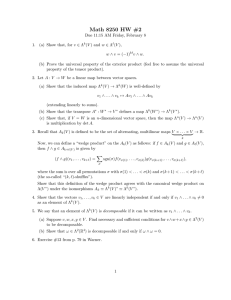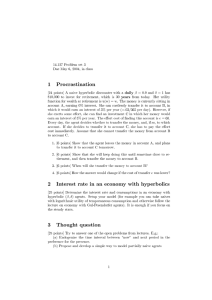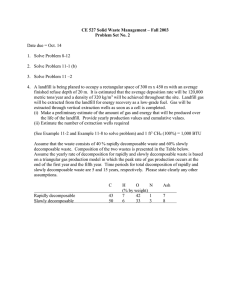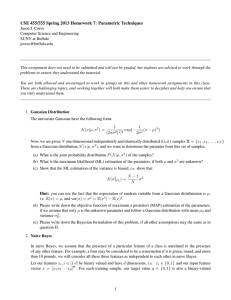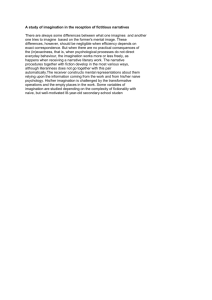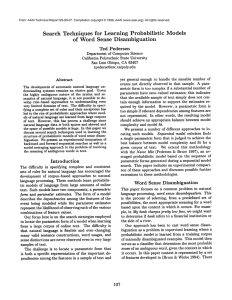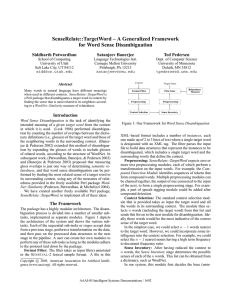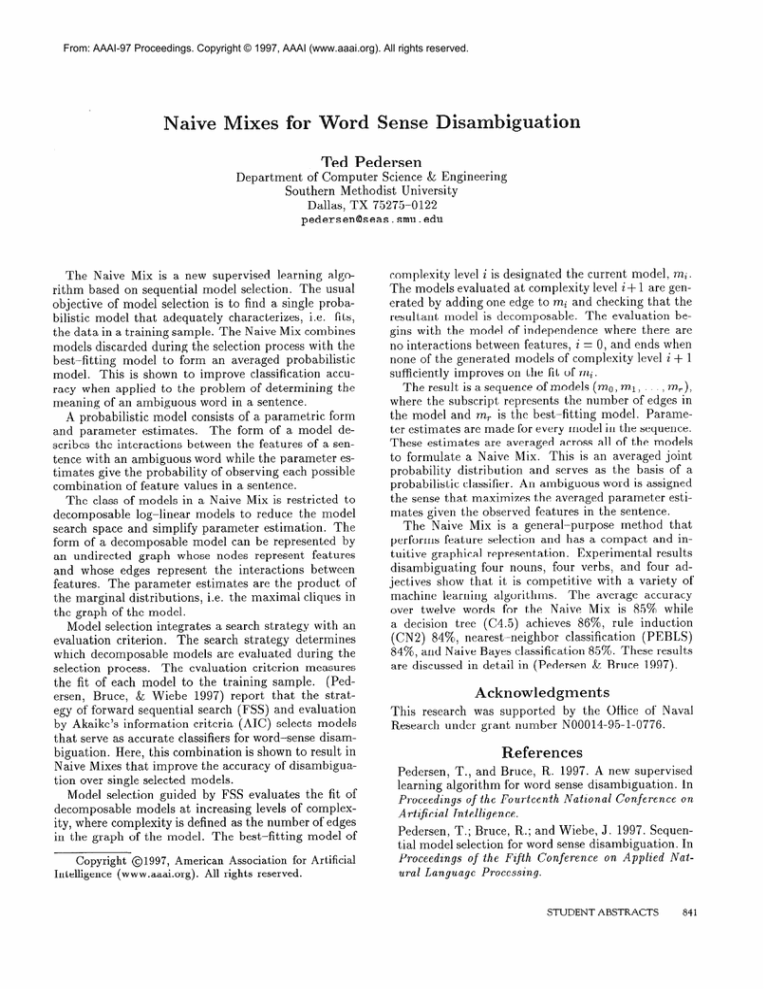
From: AAAI-97 Proceedings. Copyright © 1997, AAAI (www.aaai.org). All rights reserved.
N&W
ixes for
Sense
isambiguatio
Ted Pedersen
Department
of Computer Science & Engineering
Southern Methodist University
Dallas, TX 75275-0122
pedersen@seas.smu.edu
The Naive Mix is a new supervised learning algorithm based on sequential model selection.
The usual
objective of model selection is to find a single probabilistic model that adequately
characterizes,
i.e. fits,
the data in a training sample. The Naive Mix combines
models discarded during the selection process with the
best-fitting
model to form an averaged probabilistic
model. This is shown to improve classification
accuracy when applied to the problem of determining
the
meaning of an ambiguous word in a sentence.
A probabilistic
model consists of a parametric form
and parameter
estimates.
The form of a model describes the interactions
between the features of a sentence with an ambiguous word while the parameter estimates give the probability of observing each possible
combination
of feature values in a sentence.
The class of models in a Naive Mix is restricted to
decomposable
log-linear
models to reduce the model
search space and simplify parameter estimation.
The
form of a decomposable
model can be represented
by
an undirected
graph whose nodes represent features
and whose edges represent the interactions
between
features.
The parameter estimates are the product of
the marginal distributions,
i.e. the maximal cliques in
the graph of the model.
Model selection integrates a search strategy with an
evaluation criterion.
The search strategy determines
which decomposable
models are evaluated during the
selection process.
The evaluation criterion measures
the fit of each model to the training sample.
(Pedersen, Bruce, & Wiebe 1997) report that the strategy of forward sequential search (FSS) and evaluation
by Akaike’s information
criteria (AIC) selects models
that serve as accurate classifiers for word-sense disambiguation.
Here, this combination
is shown to result in
Naive Mixes that improve the accuracy of disambiguation over single selected models.
Model selection guided by FSS evaluates the fit of
decomposable
models at increasing levels of complexity, where complexity is defined as the number of edges
in the graph of the model. The best-fitting
model of
Copyright
01997,
American
Association
for Artificial
Intelligence
(www.aaai.org).
All rights reserved.
complexity level i is designated the current model, mi.
The models evaluated at complexity level i+ 1 are generated by adding one edge to mi and checking that the
resultant model is decomposable.
The evaluation begins with the model of independence
where there are
no interactions
between features, i = 0, and ends when
none of the generated models of complexity level i + 1
sufficiently improves on the fit of mi.
The result is a sequence of models (mo, ml, . . . , m,),
where the subscript represents the number of edges in
the model and m, is the best-fitting
model. Parameter estimates are made for every model in the sequence.
These estimates are averaged across all of the models
to formulate a Naive Mix. This is an averaged joint
probability
distribution
and serves as the basis of a
probabilistic
classifier. An ambiguous word is assigned
the sense that maximizes the averaged parameter estimates given the observed features in the sentence.
The Naive Mix is a general-purpose
method that
performs feature selection and has a compact and intuitive graphical representation.
Experimental
results
disambiguating
four nouns, four verbs, and four adjectives show that it is competitive
with a variety of
machine learning algorithms.
The average accuracy
over twelve words for the Naive Mix is 85% while
a decision tree (C4.5)
achieves SS%, rule induction
(CN2) 84%, nearest-neighbor
classification
(PEBLS)
84%, and Naive Bayes classification 85%. These results
are discussed in detail in (Pedersen & Bruce 1997).
Acknowledgments
This research was supported
Research under grant number
by the Office of Naval
N00014-95-1-0776.
References
Pedersen, T., and Bruce, R. 1997. A new supervised
learning algorithm for word sense disambiguation.
In
Proceedings of the Fourteenth National Conference
on
Artificial Intelligence.
Pedersen, T.; Bruce, R.; and Wiebe, J. 1997. Sequential model selection for word sense disambiguation.
In
Proceedings of the Fifth Conference
on Applied Natural Language Processing.
STUDENT ABSTRACTS
841

